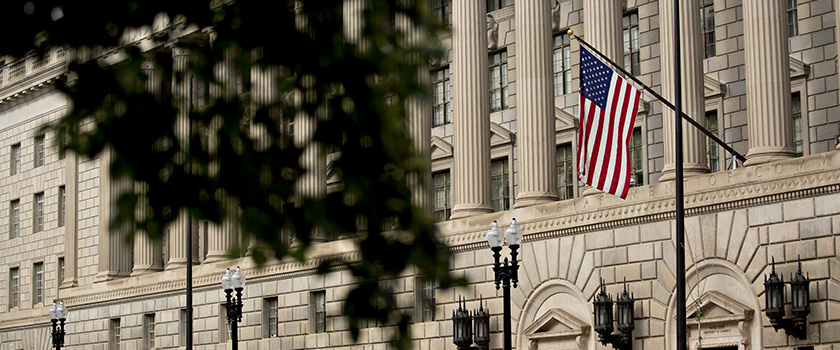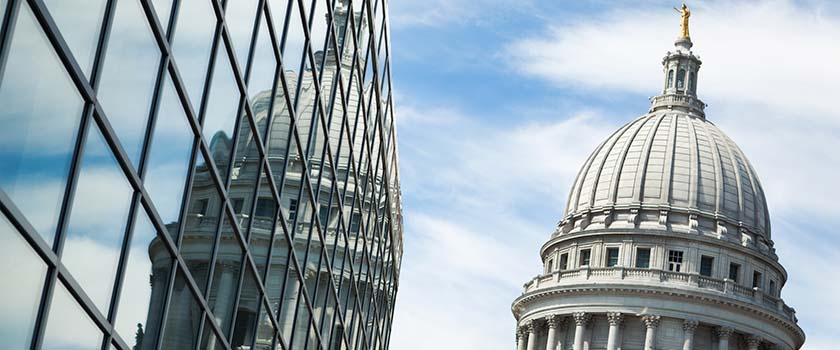Asia Macro - The Olympics will take place despite the State of Emergency (SOE) being extended until August 23. International spectators have been banned and consumer sentiment remains subdued, with few people supporting the event.
Key takeaways
-
Against this backdrop, we expect that the Olympics will not deliver a boost to the economy. However, vaccination rates have picked up, paving the way for a gradual recovery in consumption in H2. The worst is therefore behind us.
- Japan’s economy will expand at a pace of 2.5% in 2021, which is significantly lower than other Developed Markets (DMs). In 2022, we expect growth to remain relatively high at 2.2%.
- We do not foresee any changes to BOJ’s policy settings, which will continue to provide support for the economy, limiting appreciatory pressures on the yen.
- Going forward, stronger exports and a weak yen will continue to drive performance in the short-term. However, in the medium term, we favour sectors which are domestically oriented or have exposure to services.
The Olympic flame burns weak, much like Japan’s consumer sentiment
The 1992 Barcelona Olympics were a barometer of their time. They took place in the aftermath of the collapse of the Berlin Wall, in a world that was looking to integrate, not decouple. For the first time since 1972, no countries boycotted the event. Paralympic archer Antonio Rebollo ignited the Olympic cauldron by shooting a flaming arrow over it, while soprano Montserrat Caballé performed the emblematic soundtrack for the games in an emotive tribute to Freddie Mercury. In contrast, the Tokyo Olympics have been marred by hurdles from the onset – not only are they taking place during a global coronavirus pandemic, they have also highlighted Japan’s structural shortcomings.
Inevitably, the image of Rebollo’s humble arrow springs to mind. When former Prime Minister (PM) Shinzo Abe came into power in 2012, he introduced an ambitious set of policies that aimed to shake Japan’s economy out of a long period of secular stagnation and deflation. “Abenomics” encompassed three “arrows”: 1) printing additional currency to support exports and stoke inflation; 2) increasing fiscal spending to stimulate private consumption; and 3) implementing structural reforms to boost labour productivity. But as the resignation of the Tokyo Olympics Chief over sexist remarks earlier this year has poignantly highlighted, a lot of work is still required on the “missing arrow” front.
Despite these hurdles, the Tokyo Olympics will take place between July 23 and August 8. The event will go ahead even as Tokyo announced an extension of the SOE until August 23. This is the fourth SOE, adding to social distancing measures that have impacted 10 prefectures covering 50% of GDP since April 2020. As a result, no international spectators will be allowed, while Japanese households will likely avoid socialising outside. Additionally, on June 24, Emperor Naruhito expressed “concerns” that the Olympics may cause a rise in infections. The rebuke was surprising as the topic remains divisive, with 68% of respondents surveyed by Asahi Shimbun on July 18 stating that they don’t believe the Olympics can be held safely. Recent reports of athletes testing positive upon arriving at the Olympic Village will certainly reinforce this perception amongst Tokyoites. Against this backdrop, we expect that the Olympics will only deliver a marginal boost to the economy. The silver lining is that vaccination rates picked up ahead of the Olympics. According to figures compiled by the Johns Hopkins University, 23% of Japan’s population have now been fully vaccinated. That is almost double the amount relative to a month ago. Nevertheless, vaccination rates remain lower than those in other DMs such as the United Kingdom (54%), Spain (52%), United States (US, 49%), Singapore (49%) and Germany (47%).
This should provide some tailwind behind domestic consumption in H2-21. But much like the Olympic flame, Japanese consumer sentiment remains weak. Household consumer confidence improved from its 2020 trough in June but remained significantly below pre-COVID levels (Chart 1). The latest SOE will likely dampen consumer sentiment further, delaying the recovery in domestic consumption. Before the latest coronavirus wave, nationwide department sales increased to 37.4% y/y in June. Admittedly, these were supported by a strong favourable base effect, something that will continue to play a role in the remainder of 2021, but also point to latent propensity to consume following from many months of SOE. As a result, we project that domestic consumption will recover, albeit gradually, in the remainder of 2021.
On the flip side, manufacturing activity, which has acted as a key driver of growth in H1-21, is expected to decline. The latter has remained supported by better demand from Japan’s largest export markets: US (20% of total) and China (19%). As a result, exports increased 49.6% y/y in May, or 21.1% y/y on average in the first five months of 2021. However, both economies have shown signs of peaking and will enter a more mature stage of recovery in H2-21 – arguably already underway for China. US inventories increased 4.5% y/y (0.5% m/m) in June and are back to pre- COVID levels, which will likely translate into slower demand for Japanese exports in the months to come. The latest Tankan survey, which is a quarterly poll of business confidence reported by the Bank of Japan (BOJ), also points in this direction. Both manufacturing and non-manufacturing conditions improved significantly to 14 and 13 in June. However, the outlook was less sanguine, pointing to expansion only at the margin (Chart 2).
We therefore project that growth will gradually pick-up in 2021, led by domestic demand (55% of GDP), reaching 2.5% in 2021. That would mark the fastest pace of expansion since 2010, but it still lags relative to other DMs such as the US and the Eurozone, where we expect GDP growth will reach 6.8% and 4.7% respectively. In 2022, we expect growth to remain relatively high at 2.2% compared to 4.2% in US and 4.5% in the Eurozone.
No end in sight to Japan’s liquidity trap
While most major central banks around the world start to entertain the notion of policy normalisation, BOJ kept its yield curve control target for short-term interest rates unchanged at -0.1% and 10Y Japanese Government Bond (JGB) yields at 0% during its latest policy meeting on July 16. The BOJ also predictably revised down its sanguine growth projections for FY21 to 3.8% from prior 4.0%, citing consumption concerns. Similarly, the Cabinet Office’s latest economic report stated that weak consumer spending and a struggling service sector would likely hold back the recovery. The report highlighted the divide between Japan’s exporters, which have benefited from the global recovery, and domestic consumption, which may still take longer to rebound. Lastly, the BOJ also noted a modest albeit transitory impact on inflation, stemming from higher commodity prices. Consequently, it also revised its CPI forecast up to 0.6% for FY21 vs prior 0.1%. Despite inflation expectations improving in June (Chart 3), core CPI remained subdued at 0.2% y/y and will remain significantly below BOJ’s elusive 2% target for the foreseeable future.
This is because Japan’s economy is stuck in a long-term paradigm. Abenomics was Japan’s bid to upend the “Liquidity Trap”, a situation whereby conventional monetary policy is unable to shock the economy out of secular stagnation and deflation. The most well-known analysis on Japan’s liquidity trap can be attributed to renown Economist Paul Krugman, who argued as early as 1998 that the only way for BOJ to stoke inflation expectations was to “credibly promise to be irresponsible”, thereby officiating the debate on large scale central bank asset purchases. However, despite a massive expansion in BOJ’s balance sheet from 20% of GDP in 2008 to more than 130% of GDP in 2021 – a very credible shift in monetary policy regime – there seems to be no end in sight to Japan’s liquidity trap.
There are two main reasons for this. Firstly, the government’s fiscal policy stimulus has been too subdued. According to IMF figures, Japan’s coronavirus response package amounted to approximately 50% of GDP, or twice as much as the US at 26%. However, the actual size of discretionary fiscal spending (or mamizu) is much smaller, around 16% of GDP. This is in line with Japan’s enduring concerns about a potential increase in the debt-to-GDP ratio, which is elevated around 235%. Indeed, Japan’s fiscal policy stance has remained restrictive over the years, with government consumption rising around 3% y/y on average between 1990 and 2020 and the budget deficit remaining broadly unchanged around -4.0% of GDP in 1980 compared to -2.9% in 2019. Moreover, structural reforms have been slow to implement. Women’s labour force participation rate (65%) remains constrained by childcare shortages and a culture of long working hours, while the gender wage gap is the third largest in the OECD (27%). Non-regular employment also rose sharply from 20% in 1994 to 38% in 2016 and most of these workers are women. The crux of the matter is that, for Japan to break free from its liquidity trap, it needs to fundamentally change its economic structure. Until that happens, expect very little change from the BOJ, with the onus falling on fiscal policy going forward.
Implications for investors
We expect that exports will lead the recovery in current profits in Q2-21 (Chart 4). Approximately 33% of all revenues under TOPIX are derived outside of Japan. Japanese manufacturers are therefore beneficiaries of strong US demand and JPY depreciation, which should be supportive of better performance in Q2-21 and into Q3-21. The JPY has appreciated towards its 200-day level of USDJPY 106 recently. However, it’s down -6.0% YTD and we expect that the cross will remain above its 200-day level in the remainder of 2021, on the back of a stronger USD.
However, some risks are worth highlighting. The TOPIX is trading at 20x earnings, above its long-term average of 18x and at a slight premium over the Nikkei. Moreover, although we do not expect the JPY to appreciate significantly in the remainder of the year, it remains attractive in REER terms, so we can’t exclude the possibility outright. In addition, the underlying increase in commodity prices will likely worsen Japan's terms of trade in the short term, further dragging on revenues. In the medium-term, the balance will tilt in favour of companies in sectors which are more domestic oriented or have higher exposure to services. Areas linked to structural reforms should also yield returns, but this may still require some time to materialise.









